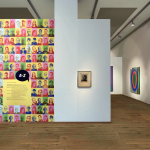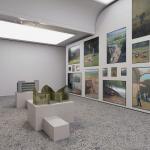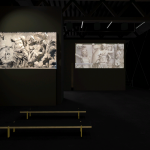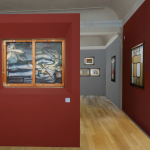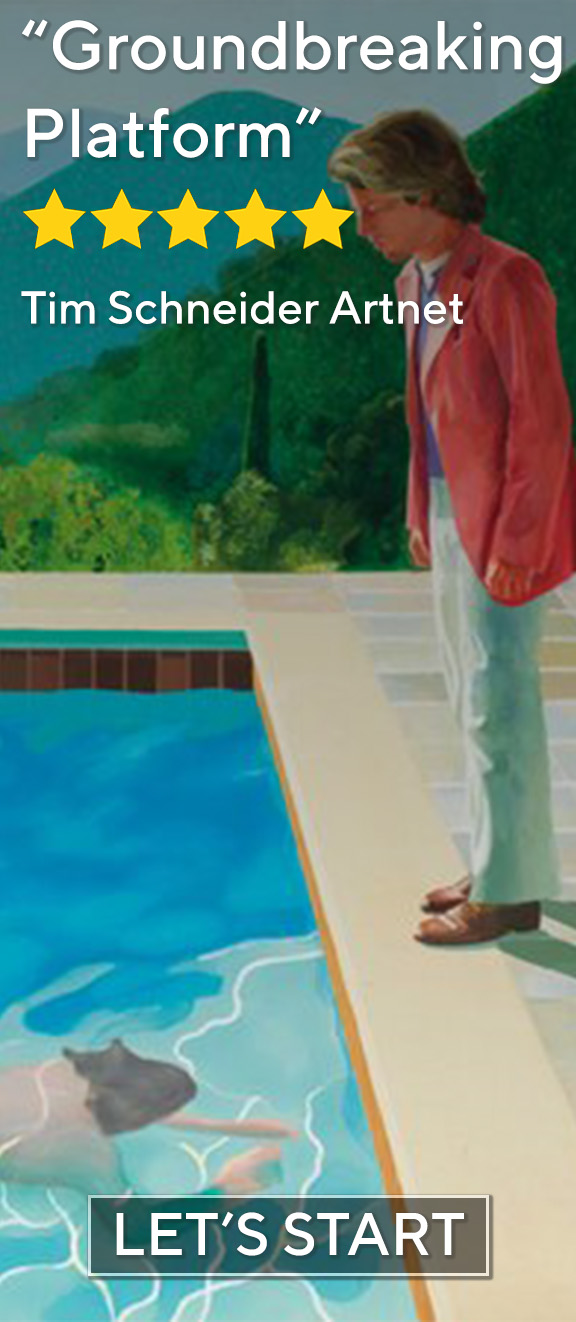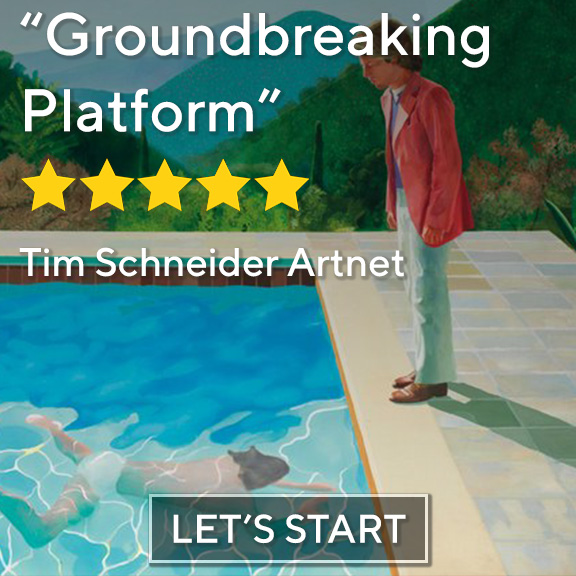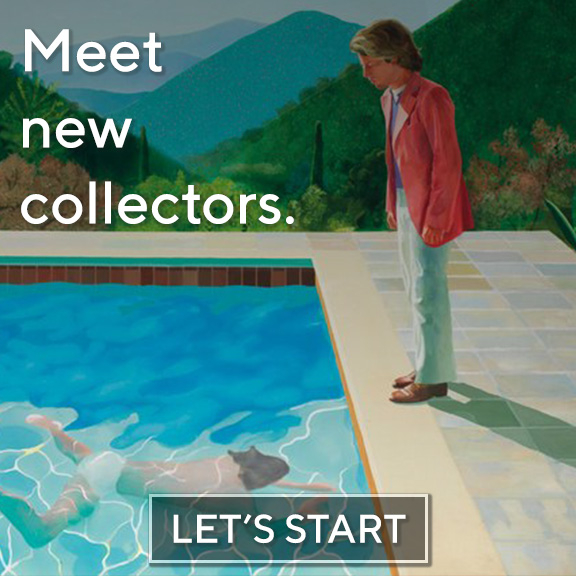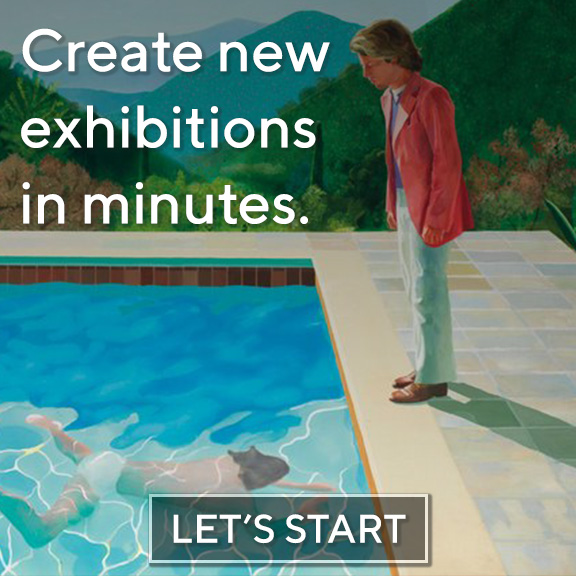Everybody heard about Online Viewing Rooms thanks to the record-breaking phenomenon of Gagosian selling an artwork from Albert Oeheln for 6 million dollars through one, but not everybody can differentiate between all the different online platforms that go by similar names, so before we list how an Online Viewing Room can help galleries reach more collectors therefore make more revenue, we should make it clear what we are talking about.
What is an Online Viewing Room?
Let’s start with physical viewing rooms. They are used by galleries to offer an exclusive look to the collectors, and they are smaller spaces than showrooms, highlighting a couple of artworks to create a special momentum away from the noise of the crowd.
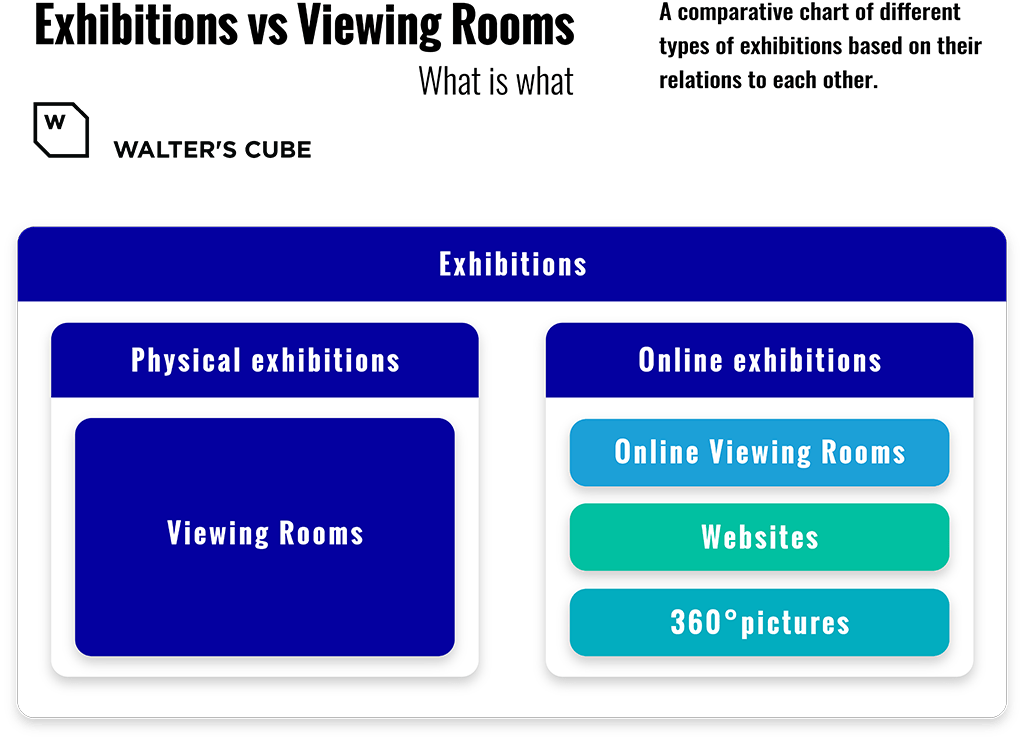
Now an Online Viewing Room is supposed to be the same, just on the Internet. An OVR is usually the reproduction of a physical space, a digitized model, which makes the exhibition globally accessible 24/7 on any smart gadget (phone, tablet, desktop, laptop, or even VR glasses). As a physical space is in 3D, an OVR should be too – this is crucial, because this is where company communications can become tricky and misleading.
We emphasize this because it is a common misconception to call specially designed websites and 360° pictures OVRs, and they are often marketed as such, even though they are not in 3D, meaning the viewer can’t walk around in the space and have a feel of time and distance.
But as every available definition states that an OVR is in 3D, and you can’t win an argument against Google, websites and 360° pictures do not have the right to be called OVRs. The source of confusion is that all 3 things qualify as online exhibitions, but not every online exhibition is an OVR. You can’t call something a room, a space, if it’s a 2D picture.
Comparing Online Exhibitions
Having a general understanding of what an OVR is (an online exhibition in 3D, curated by galleries and museums to target collectors like a physical viewing room does, but it’s also accessible from anywhere, anytime, providing a way of seeing art to all the art lovers), we can move on to compare the different platforms.
We propose 3 perspectives: the gallery benefits, the user experience, and the specifics of the visit, as these can shed a light on how 3D OVRs differ from other means of displaying art online.
Gallery benefits
Galleries tend to have two goals. One, to display artworks visitors enjoy and get something meaningful from, preferably in a tasteful and well-thought-out way. Two, sell those artworks.
Online exhibitions can be helpful in achieving both of those goals. Obviously, there’s the profit of reaching more visitors and collectors all around the world through the Internet, no matter what time zone they are in, making the pool of possible customers bigger.
Then those possible customers can be turned into actual customers with a higher success rate using a 3D OVR rather than the other two options as the experience of a 3D OVR feels much more like reality than a flat website that reminds them of shopping on Amazon or a 360° picture that gives the impression of trying to find something on Google Maps.
3D OVRs can also be embedded into their own website like a Youtube video, meaning that visitors don’t leave their pages as opposed to the other two cases.
While 360° pictures can’t carry much information, websites and 3D OVRs can provide collectors with artwork information or even prices. With 3D OVRs, they can even have a button that automatically sends a notification directly to the gallery if somebody is interested.
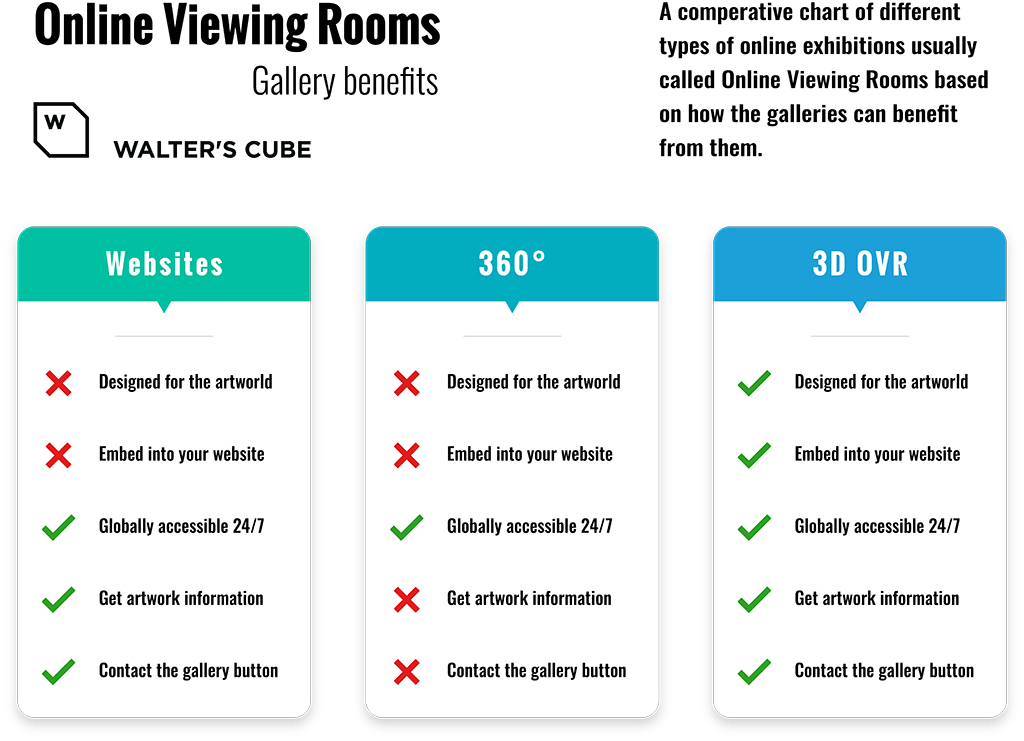
usually called Online Viewing Rooms based on how the galleries can benefit from them
User experience
There are several reasons why a 3D OVR is more convincing to a potential buyer than any other form of online exhibition, and all of those are rooted in the experience it provides, which boils down to how they are built.
Websites are flat like a webshop, 360° pictures are basically panorama pictures like the ones you see on Google Street View, but 3D OVRs are like video games designed with technology specifically developed for the art world.
So the first two are in 2D, the last in 3D. This is important because that extra dimension is what gives the viewers the real exhibition experience the other two lack where they can walk around in the virtual space as they would in real life.
Websites are completely still (not counting the animations), 360° pictures work with fractured movement as you jump from one fixed point to the other, whereas 3D OVRs offer seamless movement, deepening the illusion of a physical space.
Walking around in the space gives the viewer a feeling of passing time and distance, but it also lets them get real close to the artworks, which is a much more natural way of taking a close look than using zoom as they would do on a website or on a 360° picture.
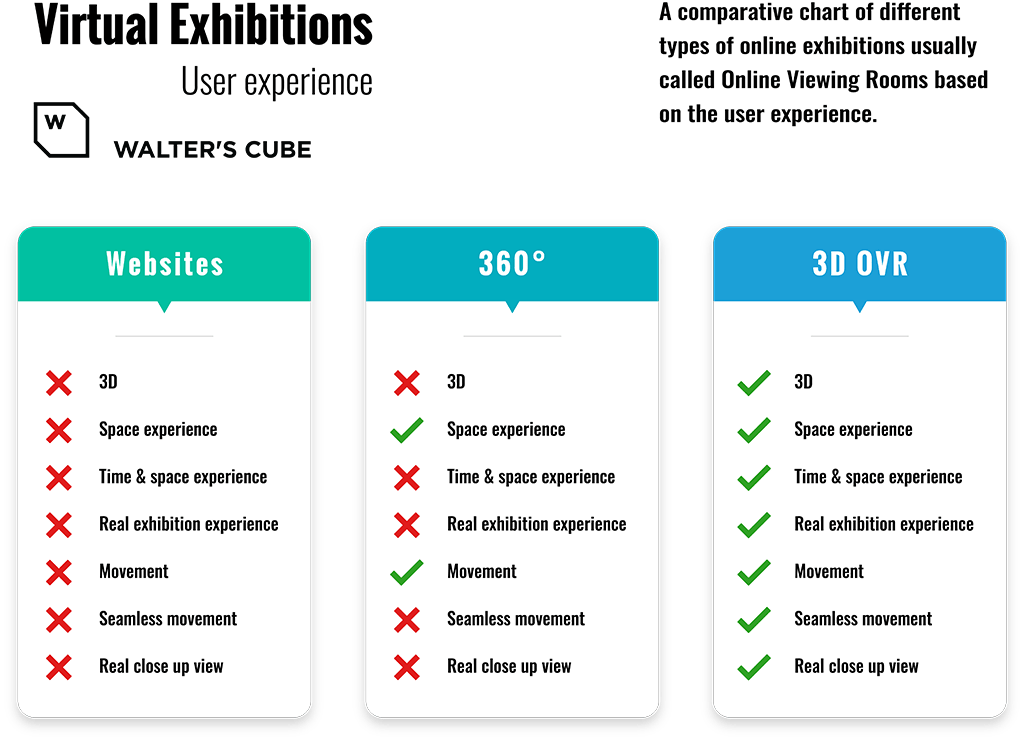
usually called Online Viewing Rooms based on the user experience
Specifics of the visit
We covered why a 3D OVR feels immersive, but we haven’t talked about the hows yet. Although it’s not needed, 360° pictures and 3D models can be enjoyed with VR glasses, while websites do not offer this option. Behind the option is the fact that the platforms are photoreal of the actual exhibition: the photographic reproductions found on websites can’t convey the space due to perspectives.
While both 360° pictures and 3D OVRs produce proportionally scaled spaces of the gallery, only the 3D OVRs can be called digital twinspaces for the reason we already mentioned – 2D pictures are not spaces.
The online exhibition in this digital twinspace can be both the documentation of an exhibition existing in the physical world, or it can be an exclusively online one that could never happen in real life for any reason.
Websites can create an exclusively virtual selection of artworks, but it would be a little bit of a stretch to call that an exhibition, and 360° pictures are only for documenting meaning they can’t.
All 3 platforms can handle paintings, drawings, photos, prints, basically any kind of work on a flat surface, but due to their technological limitations, 360° pictures can’t portray sculptures, reliefs, installations (anything that has texture).
In a 3D OVR, every sculpture is built in a programme to make the visitor be able to walk around it, and all kinds of videos and audios can be added like they were embedded into a website, making these two multimedia platforms.
This audio option combined with the free movement opens new doors for 3D OVRs as an educational tool, since curators can record guided tours in them to go with the quotes and background information that can be uploaded.
These tours can be played, stopped, and replayed at any moment, making sure the visitors never miss anything.
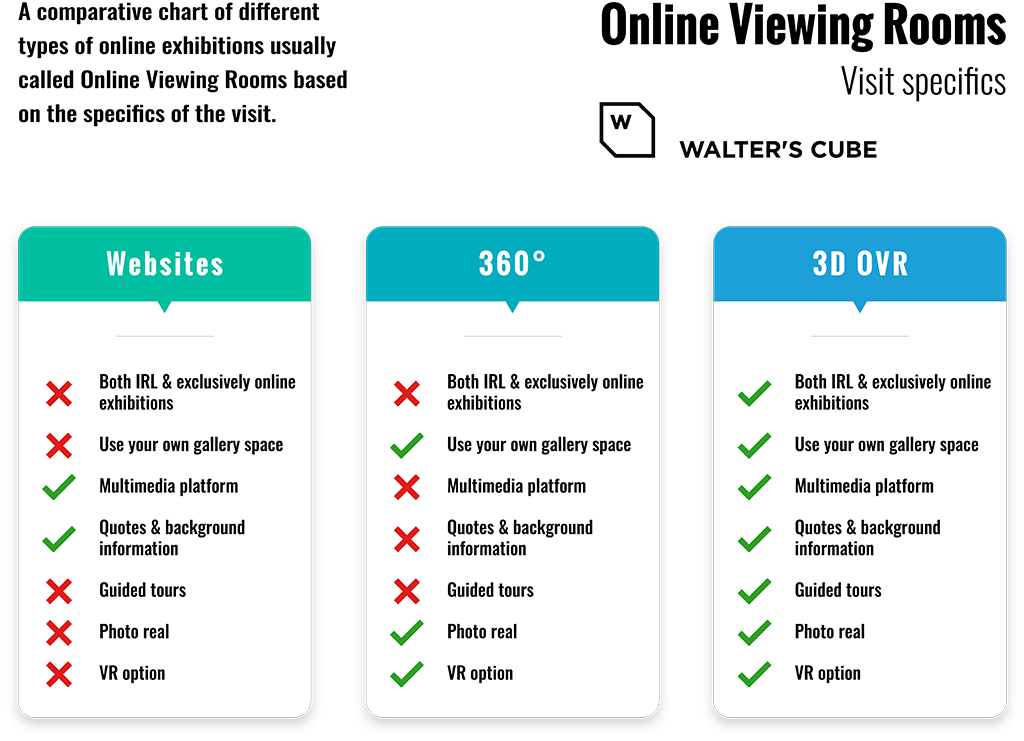
usually called Online Viewing Rooms based on the specifics of the visit
The thumbnail is a screenshot from the 3D model of Josef Filipp Galerie’s exhibition titled Studio 11 from Wolfgang Ellenrieder made by Walter’s Cube. Available on the Online Viewing Room.


